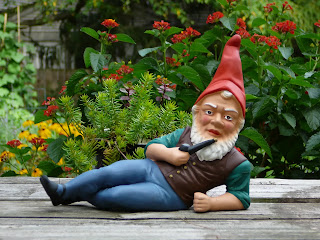At this very moment I am sitting in the sun, in a small village approximately 30km east of Berlin. The sun is a very cherished thing for the Eastern Europeans and you could almost compare the faces of locals to the spectacular blooms of the Sunflower, chasing the sun throughout the day. Even though it is only 8 degrees outside, the sun makes it both bearable and enjoyable outside.
From my spot in the garden I can see bulbiferous spring plants sending up their leaves to capture nourishment for the soon to arrive flowers, the first blooms spring to life on plants brave enough to shed their winter coats. Buds swell on tree branches and the first flowers are appearing on species such as Malus, Prunus and Pyrus.
Luckily I have a fairly large garden at my disposal, this very typical of the surrounding area, not a lot of high density building around here. But as a Sydney-sider, it's easy to struggle with limited space when you have a green thumb. Luckily we have had some forward thinking types who have provided open spaces such as urban and community gardens. The Germans also pioneered this in the late 19th century.
 |
| Professor Daniel Gottlob Moritz Schreber |
German Physician Professor Schreber worked primarily with young children and adolescents. From 1844 he was the Director of the Leipzig Sanatorium. He became famous as an author, publishing multiple books and papers on raising children and the social consequences of urbanization during the start of the Industrial Revolution. His theories on how babies, toddlers and children should be raised were unorthodox and if proposed today he would suffer much backlash. Although at the time he was considered an authority on the matter.
What the professor did feel strongly about is the health benefits of outdoor physical activity for the nations youth, he saw this as a healthy relief for active children. He also advocated for playgrounds to be built outside of towns due to the limited space around houses. This idea led to what his name is now synonymous with, the Schrebergarten.
 |
| A typical Kleingarten setting in Germany |
During the early 20th century, especially during the First and Second World Wars these Kleingarten (small garden allotments) became essential for food production and for survival, as many families struggled with food supply, poverty and malnutrition.
 |
| A Schrebergarten in Wenigerode |
Today there are almost 1.4 million allotments in Germany, comprising of 833 garden "complexes" and covering around 470 square kilometres. If you spend some time travelling on the outskirts of larger towns and cities, especially on trains, you will pass many of these rambling community orientated gardens. At first you may no think much of them, on the outside, some look a little shabby campsite and you wonder if anyone lives there, garden gnomes perhaps? But once you get amongst them you soon realise that they do show off the individuality of the residents.
The surge in popularity of greenspaces, especially the need to connect to nature, exacerbated by the current pandemic has made urban and community gardening very much in vogue again for those who with limited space. This is also the case with availability of the Schrebergarten allotments. If you are thinking of getting one, there's an almost 3 year wait list! Plus you'll be in line with approximately 12,000 others who want a little garden of their own.
 |
| Looking over the back fence |
Of course, being Germany, there are rules! Garden allotment complexes will have a standard rule book, much like by-laws you might find if you are lucky enough to be involved in a strata scheme. Rules can vary from community to community but in general these "laws" will regulate your allotment in regards what you can grow, how far/close your fence can be from the shed, if you can BBQ and what days and times you can mow your lawn.
For many decades there has been a stigma around those who keep and manage these small gardens. They have been thought of as being kooks, weirdo's, strict and stringent but it isn't the first time (and certainly not the last) gardening folk have been labelled peculiar.
The trend is changing due to the younger families getting involved with these garden allotments. Schreber's vision and thoughts on urbanization have certainly rang true, with more and more people starved of the opportunity to have their own green space, hence the demand. The injection of "young blood" into these gardening communities will help drive and popularise it further in the coming decades.
We have all felt the struggle of the past 2 years and we are well aware of the measurable health benefits of connecting with the natural world, us humans have an almost primal urge to do so. The small garden allotment scheme isn't a new idea but it has helped drive other urban gardening policy and biophilic design principles being initiated in cities around the world today.
Countless community gardens can be found all around the cities and towns you live near. You are sure to find information on line, via council websites or social media. Give it a go, immerse yourself, connect with nature and other like minded people - you'll feel the benefits almost straight away.


No comments:
Post a Comment